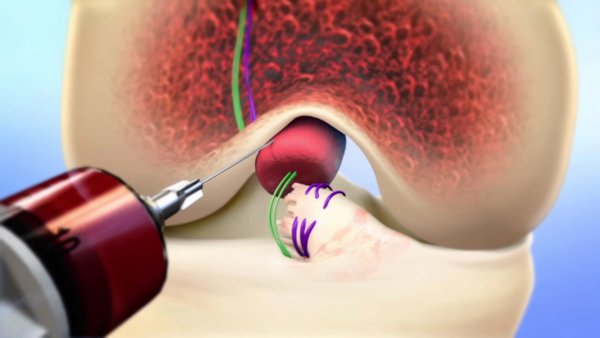 Doctors Experiment With New Way of Fixing the A.C.L. (NY Times by CATHERINE SAINT LOUIS)
Doctors Experiment With New Way of Fixing the A.C.L. (NY Times by CATHERINE SAINT LOUIS)
Anterior cruciate ligaments often tear on the sports field, and after a complete rupture, they are notoriously hard to get to heal.
On Wednesday, doctors at Boston Children’s Hospital announced that they have succeeded in reconnecting A.C.L.s in 10 patients using a novel technique.
Their preliminary results at three months suggest that healing an original A.C.L. without the usual grafts may be a viable option in the future.
Experts were intrigued but cautious.
“This is definitely an advance,” said Dr. Jo Hannafin, a senior attending orthopedic surgeon at the Hospital for Special Surgery in New York, who was not involved in the experiment.
But, she added, “I don’t think we will know for three to five years whether this technique is really effective or not.”
Each year, roughly 200,000 people injure the A.C.L., which runs diagonally through the middle of the knee and provides stability.
In a standard surgical treatment — performed 100,000 times a year — the ligament is reconstructed with a graft from the patient’s hamstring or patella.
In a preliminary study to assess safety, Dr. Martha Murray and her team at Boston Children’s Hospital performed standard reconstructions on 10 patients with A.C.L. tears and the experimental procedure, called bridge-enhanced A.C.L. repair, on 10 others.
In the experimental technique, the surgeons placed a blood-soaked sponge between the ligament’s severed ends; the sponge acted as a bridge, helping the ligament grow back together over the next six to eight weeks.
It was the first time the technique had been tried in humans.
No participants in either group had ligaments that failed to reconnect, got an infection or had stiff knees.
Only the first patient — Corey Peak, 26 — has passed the one-year mark since the experimental procedure. The other patients had it done a roughly six months.
Three months after the operation, Mr. Peak, a doctoral candidate at Harvard School of Public Health, was back to running on the treadmill. This spring he will play ultimate Frisbee and soccer.
“The real beauty of it is you are getting the native A.C.L. to heal without having a graft,” said Dr. Rick Wright, professor of orthopedic surgery at Washington University School of Medicine in St. Louis, who was not involved in the experimental treatment.
Over time, surgeons hope a healed original ligament may perform better than a grafted one. And if the A.C.L. could be saved, they could avoid harvesting a tendon from the hamstring.
However, repaired A.C.L.s have failed in the past. In the 1980’s, surgeons tried stitching torn A.C.L.s back together. The initial results were good, but five years later, less than half of those knees remained stable, Dr. Hannafin said.
Soon, Dr. Murray of Boston Children’s Hospital plans to start enrolling participants for a randomized trial that will compare the experimental surgery to the standard reconstruction.